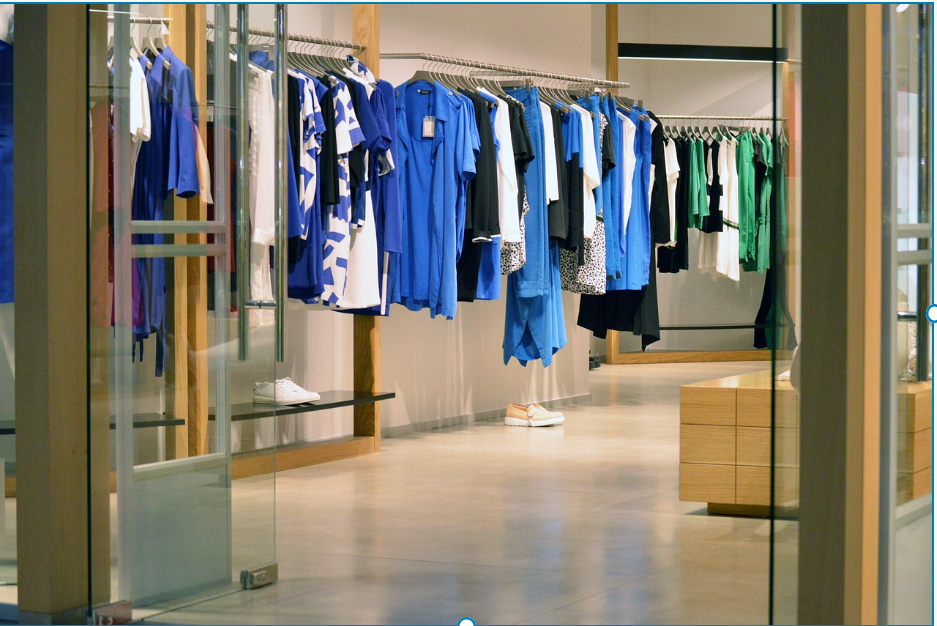A boutique is a small retail store that usually focuses on style and a selection of clothes and accessories. This is a simple definition that’s technically correct, but also incomplete. Why? Because a boutique is more than just a store that sells stylish products. It’s all about creating a personal shopping experience that feels unique, thoughtful, and leaves a lasting impression on every customer who walks through the door.
If your goal is to open up a boutique, you must first understand how to provide this experience to your customers. So, how do you do that, and where do you start in 2025?
1. Define Your Boutique’s Identity
Before anything else, ask yourself: what kind of boutique do you want to run? Is it boho-chic, luxury fashion, minimalist essentials, or vintage treasures? In 2025, consumers are drawn to strong brand identities. This means your name, logo, colors, store layout, website, and even your Instagram grid should reflect a consistent story that customers can connect with emotionally.
Your boutique isn’t just about the products—it’s about the vibe. When customers walk into your space or scroll through your feed, they should immediately sense your unique aesthetic. The stronger your brand, the easier it is to build loyalty and recognition.
Take time to brainstorm your mission, vision, and core values. These elements will guide every decision you make—from the types of items you stock to how you greet a customer at the door.
2. Understand Your Target Market
The secret to a successful boutique lies in knowing who you’re selling to. Are your ideal customers young trendsetters, working professionals, or eco-conscious shoppers?
Use tools like Google Trends, Instagram insights, and community surveys to understand what your audience wants. Also consider demographics, buying behavior, and lifestyle preferences. The more detailed your customer profile, the better you’ll be at choosing products that resonate with them.
Tailor your selection, price point, store ambiance, and even your tone of voice to match their lifestyle. In 2025, personalization isn’t a bonus—it’s the expectation. Customers want to feel like your boutique was made for them.
3. Source Your Inventory Wisely
Your boutique will live or die by your product selection. Will you create your own items? Work with local designers? Or buy wholesale from trusted suppliers?
Curating inventory takes strategy. Start with a focused product mix that reflects your brand identity and caters to your audience’s needs. Use data and feedback to adjust as you go. Remember: quality over quantity is key.
For those starting out, partnering with a reliable boutique business startup platform can make sourcing easier, especially if you’re looking for stylish, ready-to-sell collections. This reduces the pressure of designing everything from scratch while giving you access to trending pieces that customers already love. Don’t forget to consider pricing margins, shipping costs, and minimum order quantities when building relationships with suppliers. Planning ahead saves time and protects your profits.
4. Choose the Right Location (or Platform)
You don’t need a corner store on Main Street to succeed. In fact, many boutiques thrive online through platforms like Shopify, WooCommerce, or Instagram Shops. You can also explore pop-up stores, trunk shows, and local market stalls.
If you opt for a physical space, focus on foot traffic, visibility, rental costs, local competition, and nearby complementary businesses (like salons, bakeries, or cafés). A welcoming storefront with great windows can invite people in even before they step inside. If you’re going digital, invest in professional branding, high-quality product photos, easy navigation, clear policies, and a user-friendly checkout experience. Your website should make shopping easy, enjoyable, and memorable.
5. Build an Online Presence That Speaks Volumes
In 2025, your social media is often your storefront. Instagram, TikTok, and Pinterest aren’t just platforms—they’re places where your boutique’s story comes alive.Use these channels to show behind-the-scenes moments, unboxings, styling tips, customer reviews, and new arrivals. Tell stories about why you chose certain pieces. Introduce your team. Go live. Be visible and real.
Create a brand voice that feels human, not corporate. Humor, warmth, and relatability go a long way when building community. A loyal audience will share your posts, recommend your shop, and turn into repeat buyers.
Also consider running targeted ads, collaborating with micro-influencers, or starting an email list to offer VIP updates and promotions.
6. Offer an Experience, Not Just a Transaction
Boutiques that stand out in 2025 do more than sell—they serve. That means offering exceptional customer service, thoughtful packaging, flexible returns, and loyalty programs that actually reward shoppers.
Think about how your boutique can surprise and delight your customers. Maybe it’s a handwritten thank-you note in every order, free shipping on the second purchase, or an invite to a members-only fashion night.
You could also host workshops, styling sessions, or seasonal launch events—either online or in-store. Customers love feeling included, and these experiences create lasting emotional connections.
Starting a boutique in 2025 isn’t about following a formula—it’s about building a brand that feels like you and resonates with the people you want to serve. With passion, planning, and a personal touch, your boutique can be more than just a store.

